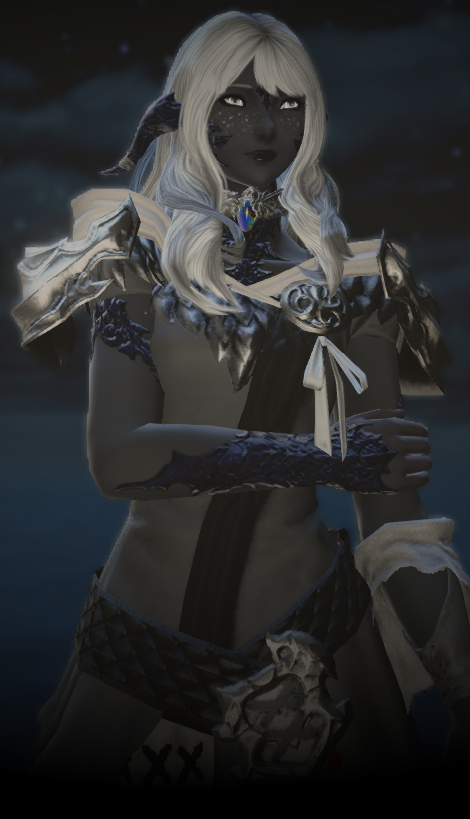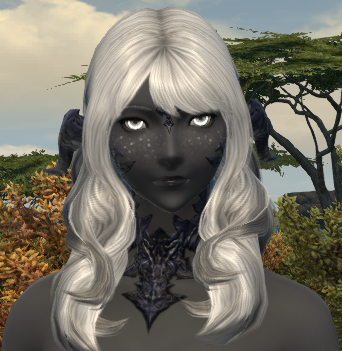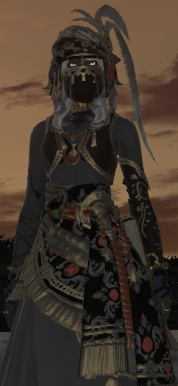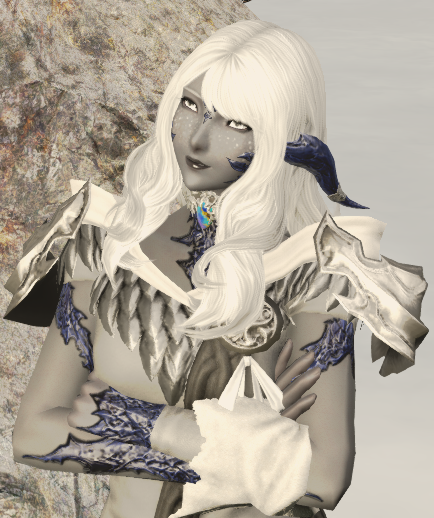Difference between revisions of "Tului Nasan"
Jump to navigation
Jump to search
(→Credits) |
(→Shamanism) |
||
| (One intermediate revision by the same user not shown) | |||
| Line 343: | Line 343: | ||
<div align=center><div style="padding:0px 10px; font-size:13px;color:#5F5F5F;font-family:Georgia;text-shadow: 1px 1px 1px silver;border-bottom:1px;border-bottom:1px dotted;letter-spacing:0.2em;font-variant: small-caps;">'''Tengri Tribe'''</div> | <div align=center><div style="padding:0px 10px; font-size:13px;color:#5F5F5F;font-family:Georgia;text-shadow: 1px 1px 1px silver;border-bottom:1px;border-bottom:1px dotted;letter-spacing:0.2em;font-variant: small-caps;">'''Tengri Tribe'''</div> | ||
| − | :<div align=justify><div style="padding:5px 15px;font-family:Georgia;font-size:12px;">The Tengri tribe is a very old, yet relatively unknown, Xaela tribe. As a whole, they avoid other tribes as much as possible and live a nomadic style that crosses the Azim Steppe, the mountain ranges, and passes alongside the route of the expansive One River. Some shaman occasionally split from the tribe in order to serve others across Othard. The Tengri are friendly to both Xaela and Raen, but interact infrequently with the Hyur. They named themselves out of reverence for their deity, Tengri, who they worship and honor as the predecessor of the Dusk Mother and Dawn Father. <br><br>While they are omnivorous, they respect all forms of beastkin and take care to kill quickly and prevent needless suffering. They believe beastkin have souls like people and often work in collaboration with animals. Women and men share duties equally within the tribe. Skin, hair, and eyes tend to be shades of black, gray, silver, blue, purple, and white. An adaptation in their ancestry led to them developing silvery-white, fish-like scales across their entire body. They believe these scales are what allow them to absorb celestial magic from Tengri in order to perform their spells. <br><br>There are various small offshoots of the tribe that settled in different areas. They are usually led by a triumvirate council headed by the Khan. The Khan, in turn, is supported by a black shaman, who handles warrior affairs AND a white shaman, who handles local affairs. There is often one or two Keeper of Souls who act as story-tellers, lore keepers, and pass on soul crystals to those who complete their rite of passage.<br><br>All members of the tribe have a totem they keep on their person, carved to represent their totem animal with elemental aspected crystals for eyes. While they are given a temporary name as a child, of the parents' choosing, they are given what is deemed their true, or earned, name upon completing their | + | :<div align=justify><div style="padding:5px 15px;font-family:Georgia;font-size:12px;">The Tengri tribe is a very old, yet relatively unknown, Xaela tribe. As a whole, they avoid other tribes as much as possible and live a nomadic style that crosses the Azim Steppe, the mountain ranges, and passes alongside the route of the expansive One River. Some shaman occasionally split from the tribe in order to serve others across Othard. The Tengri are friendly to both Xaela and Raen, but interact infrequently with the Hyur. They named themselves out of reverence for their deity, Tengri, who they worship and honor as the predecessor of the Dusk Mother and Dawn Father. <br><br>While they are omnivorous, they respect all forms of beastkin and take care to kill quickly and prevent needless suffering. They believe beastkin have souls like people and often work in collaboration with animals. Women and men share duties equally within the tribe. Skin, hair, and eyes tend to be shades of black, gray, silver, blue, purple, and white. An adaptation in their ancestry led to them developing silvery-white, fish-like scales across their entire body. They believe these scales are what allow them to absorb celestial magic from Tengri in order to perform their spells. <br><br>There are various small offshoots of the tribe that settled in different areas. They are usually led by a triumvirate council headed by the Khan. The Khan, in turn, is supported by a black shaman, who handles warrior affairs AND a white shaman, who handles local affairs. There is often one or two Keeper of Souls who act as story-tellers, lore keepers, and pass on soul crystals to those who complete their rite of passage.<br><br>All members of the tribe have a totem they keep on their person, carved to represent their totem animal with elemental aspected crystals for eyes. While they are given a temporary name as a child, of the parents' choosing, they are given what is deemed their true, or earned, name upon completing their rite of passage.<br><br>Due to their divination abilities, many knew and prepared for the coming of the Garleans. While some made the Exodus to Eorzea over the cycles, a fair few tribes remained in Othard - in hiding. Their fates are unknown as they are mostly scattered deep into the wilderness for their own safety.</div></div></div> |
<div style="padding: 7px 4px;font-size:13px; color:#585350;font-family:Georgia;border-bottom:1px;border-bottom:1px dotted;letter-spacing:0.2em;font-variant: small-caps;">'''OOC Notes'''</div> | <div style="padding: 7px 4px;font-size:13px; color:#585350;font-family:Georgia;border-bottom:1px;border-bottom:1px dotted;letter-spacing:0.2em;font-variant: small-caps;">'''OOC Notes'''</div> | ||
| Line 368: | Line 368: | ||
<div align=center><div style="padding:0px 10px; font-size:13px;color:#5F5F5F;font-family:Georgia;text-shadow: 1px 1px 1px silver;border-bottom:1px;border-bottom:1px dotted;letter-spacing:0.2em;font-variant: small-caps;">'''The Windhorse'''</div> | <div align=center><div style="padding:0px 10px; font-size:13px;color:#5F5F5F;font-family:Georgia;text-shadow: 1px 1px 1px silver;border-bottom:1px;border-bottom:1px dotted;letter-spacing:0.2em;font-variant: small-caps;">'''The Windhorse'''</div> | ||
| − | :<div align=justify><div style="padding:5px 15px;font-family:Georgia;font-size:12px;">The Windhorse, or ''hiimori'', is the term used to denote the psychic and spiritual power of a person. The windhorse is strengthened by following religious rituals and connecting with the universe. For example, placing a stone on a shrine or breathing in sacred smoke increases the power of one's windhorse. Engaging in taboo activities or self-destructive tendencies, however, will lesson the windhorse's strength. <br><br>Horses hold a valuable place in many Xaela tribes on both a literal and spiritual level. It is believed that when a shaman goes on a spirit journey, they are riding their windhorse in order to get there.''Ovoo'' shrines are often trees, stones, or bones built in a conical fashion. When a horse dies, it's skull is often left at an ovoo out of respect. If other riders notice this, they will leave a single strand of hair from the tail of their own horse in reverence to the deceased steed's spirit.</div></div></div> | + | :<div align=justify><div style="padding:5px 15px;font-family:Georgia;font-size:12px;">The Windhorse, or ''hiimori'', is the term used to denote the psychic and spiritual power of a person. The windhorse is strengthened by following religious rituals and connecting with the universe. For example, placing a stone on a shrine or breathing in sacred smoke increases the power of one's windhorse. Engaging in taboo activities or self-destructive tendencies, however, will lesson the windhorse's strength. <br><br>Horses hold a valuable place in many Xaela tribes on both a literal and spiritual level. It is believed that when a shaman goes on a spirit journey, they are riding their windhorse in order to get there. ''Ovoo'' shrines are often trees, stones, or bones built in a conical fashion. When a horse dies, it's skull is often left at an ovoo out of respect. If other riders notice this, they will leave a single strand of hair from the tail of their own horse in reverence to the deceased steed's spirit.</div></div></div> |






